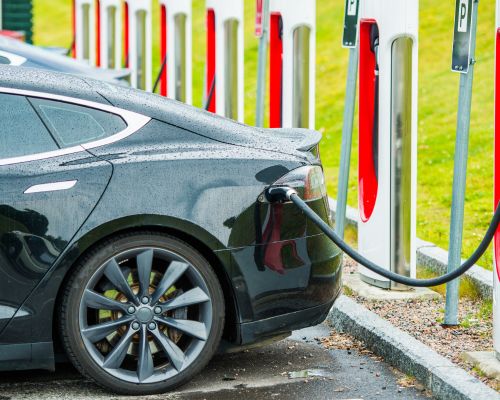Future of Electric Vehicles
27/07/2024 | Future of EV
The Future of Electric Vehicles: Transforming Transportation Introduction
Electric Vehicles (EVs) have evolved from a niche market to a central focus of the automotive industry. As the world grapples with climate change and seeks sustainable solutions, the future of EVs is poised to transform the way we think about transportation. In this blog, we'll explore the trends, technological advancements, challenges, and potential impacts of the growing EV revolution.
The Current State of Electric Vehicles
Electric vehicles have made significant strides in recent years. Major automakers are investing heavily in EV technology, expanding their electric vehicle lineups, and setting ambitious targets for phasing out internal combustion engines. Governments worldwide are implementing policies and incentives to promote EV adoption, and the charging infrastructure is expanding rapidly.
Key Trends Shaping the Future of EVs
Advances in Battery Technology
Battery technology is at the heart of the electric vehicle revolution. Advances in lithium-ion batteries have already significantly improved EV range and performance. Looking ahead, solid-state batteries promise even greater energy density, faster charging times, and enhanced safety. These innovations could lead to longer-lasting batteries and make EVs more affordable and practical for a wider audience.
Autonomous Driving
Autonomous driving technology is set to revolutionize the automotive industry, and electric vehicles are at the forefront of this change. Autonomous EVs offer the potential for safer, more efficient transportation systems. Companies like Tesla, Waymo, and traditional automakers are making significant investments in developing self-driving technology, with some already conducting real-world tests.
Charging Infrastructure Expansion
The growth of charging infrastructure is crucial for the widespread adoption of electric vehicles. Governments and private companies are investing heavily in expanding the network of charging stations. Innovations such as ultra-fast chargers and wireless charging solutions are being developed to make EV charging more convenient and accessible.
Renewable Energy Integration
The integration of renewable energy sources with electric vehicles is a key trend for the future. Solar panels, wind turbines, and other renewable energy technologies can be used to power EVs, reducing their overall carbon footprint. Additionally, vehicle-to-grid (V2G) technology allows EVs to feed energy back into the grid, enhancing energy stability and efficiency.
Urban Mobility Solutions
Electric vehicles are set to play a major role in urban mobility solutions. E-scooters, electric bikes, and electric public transport systems are becoming more prevalent in cities around the world. These solutions help reduce traffic congestion, lower emissions, and create more sustainable urban environments.
Challenges Ahead
While the future of electric vehicles is promising, several challenges need to be addressed:
Battery Production and Recycling
The production and recycling of batteries pose environmental and ethical challenges. The extraction of raw materials like lithium, cobalt, and nickel can have adverse environmental impacts and raise concerns about labour practices. Developing sustainable and ethical practices in battery production and recycling is essential for the long-term success of EVs.
Charging Infrastructure
Despite significant progress, the availability and convenience of charging infrastructure remain a challenge, especially in rural areas and developing countries. Continued investment and innovation in charging solutions are necessary to support the growing number of electric vehicles on the road.
Range Anxiety
Range anxiety, or the fear of running out of battery before reaching a charging station, still affects potential EV buyers. Ongoing improvements in battery technology and the expansion of charging networks are needed to alleviate this concern.
Initial Cost
The initial cost of electric vehicles can be higher than that of traditional gasoline-powered cars. While long-term savings on fuel and maintenance are significant, the upfront cost remains a barrier for many consumers. As battery prices continue to decline and production scales up, EVs are expected to become more affordable.
The Impact of EVs on Society and the Environment
The widespread adoption of electric vehicles has the potential to bring about significant positive impacts on society and the environment:
Reduced Greenhouse Gas Emissions
Electric vehicles produce zero tailpipe emissions, which can significantly reduce greenhouse gas emissions and improve air quality, especially in urban areas. This shift is crucial for combating climate change and protecting public health.
Energy Independence
Electric vehicles can help reduce dependence on fossil fuels, promoting energy independence and security. By utilizing locally sourced renewable energy, countries can reduce their reliance on imported oil and gas.
Economic Growth
The growth of the electric vehicle industry can stimulate economic growth by creating jobs in manufacturing, research and development, and infrastructure development. Additionally, the EV market can drive innovation and competitiveness in the automotive sector.
Reduced Greenhouse Gas Emissions
Electric vehicles produce zero tailpipe emissions, which can significantly reduce greenhouse gas emissions and improve air quality, especially in urban areas. This shift is crucial for combating climate change and protecting public health.
Conclusion
The future of electric vehicles is bright, with technological advancements, supportive policies, and growing consumer awareness driving the transition to cleaner, more sustainable transportation. While challenges remain, the continued evolution of battery technology, charging infrastructure, and autonomous driving will shape the next generation of EVs. As we move towards a more electric future, the positive impacts on the environment, society, and economy will become increasingly evident, paving the way for a greener and more sustainable world.
